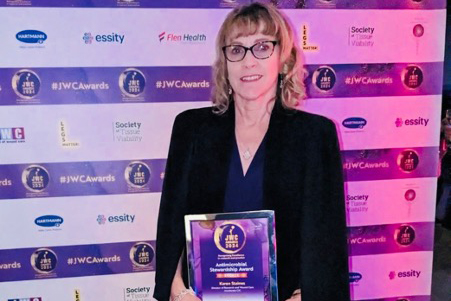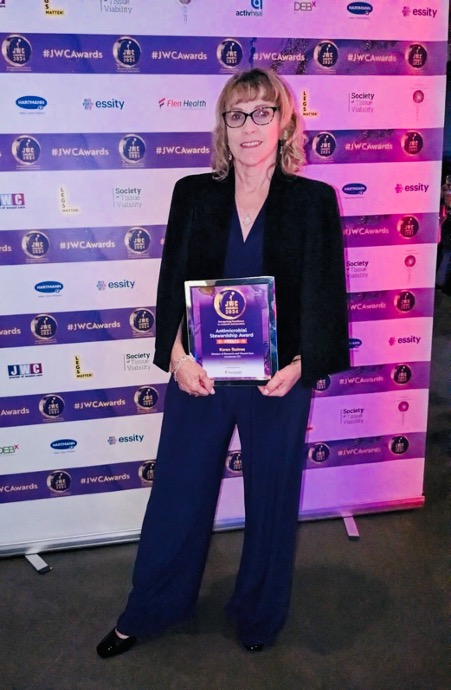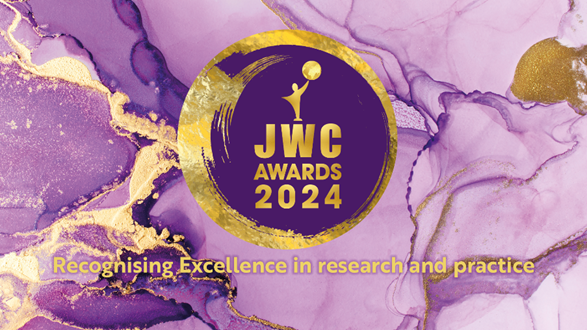Journal of Wound Care 2024 Awards – Bronze Award

We are delighted to have won the bronze award in the Antimicrobial Stewardship category at the Journal of Wound Care (JWC) Awards 2024!
These auspicious awards, organised by the Mark Allen Group, recognise excellence in research and practice.
Presentation of the award was made to Karen Staines at the JWC awards ceremony at the Imperial War Museum and the research work for which Karen won the award is described below.

Changing practice in wound bed preparation to reduce use of topical anti-microbials
Introduction
The financial burden of managing chronic wounds in the UK has been widely discussed and this continues to rise with an estimated cost of treating an unhealed wound increased from £1,500 to £3,700 over a period of 5 years (Guest, 2021).
Chronic wounds are likely to have an increased bacterial burden with devitalised tissue and biofilms not visible to the naked eye. Wound debridement aids new granulation tissue and reduces the risk of infection thus speeds up the healing process. Pathways have been introduced to remove the bacterial burden in the wound by debridement and use of topical anti-microbial which has driven the overuse of topical antimicrobials further. Antimicrobial resistance has (AMR) has been declared one of the top public health hazards and could result in over ten million people losing their lives by 2025 (Goel et al, 2011).
As a community interest company focusing on wound care and lymphoedema we are continually seeking to find new ways of improving care for our patient cohort and recognise that overuse of anti-microbials is not beneficial to the patient or economy.
Method
We focused on wound bed preparation by using a cleansing and debridement tool designed ergonomically that could be used on a variety of non-infected, infected and wounds that had a suspected biofilm.
Staff were trained on how to use the debridement tool and the optimum time to debride of 3—4 minutes was used to guide clinicians to debride the wound and peri-wound area unless the patient could not tolerate this.
Usual practice was to apply gauze soaked in an anti-microbial cleansing solution to the wounds at each dressings change which was left on for a period of 10-15 minutes although for the purpose of the study we stopped this practice as this is also classed as a topical antimicrobial.
Patients were given information about the wound debridement tool we were proposing to use and gave written consent to take part in the evaluation.
All patients with wounds were enrolled into the study unless debridement was contra-indicated or they were already showing signs or symptoms of having a wound infection.
Results
Over a calendar month we saw 44 patients who had a total of 135 debridement sessions. Only 10% of wounds required an antimicrobial due to localised infection and 8% systemic antibiotics of which we can not be sure if they had developed prior to the first wound debridement.
The drop in antimicrobial use and increase in debridement resulted in cost savings of 18% over a six-month period based on a comparison between 2022 and 2023 data.
Conclusion
This change in practice has continued although staff will be reminded if the use of topical antimicrobials starts to rise again. This was a small cohort of patients but demonstrated that good wound bed preparation negated the need to use topical antimicrobials in most cases.
